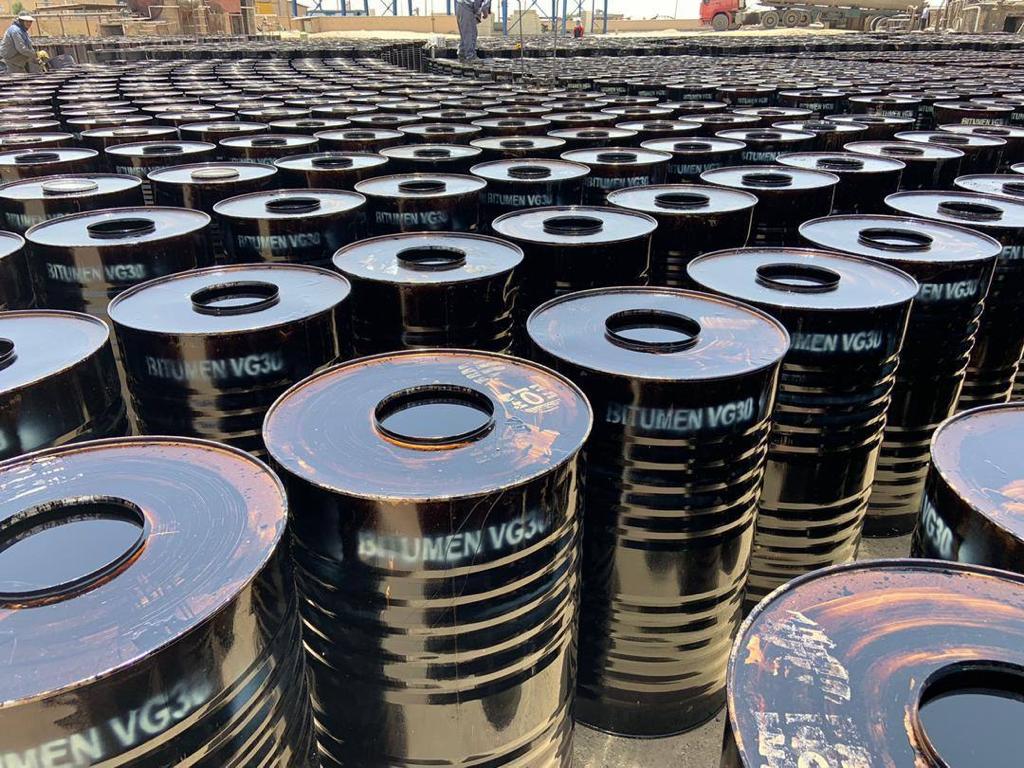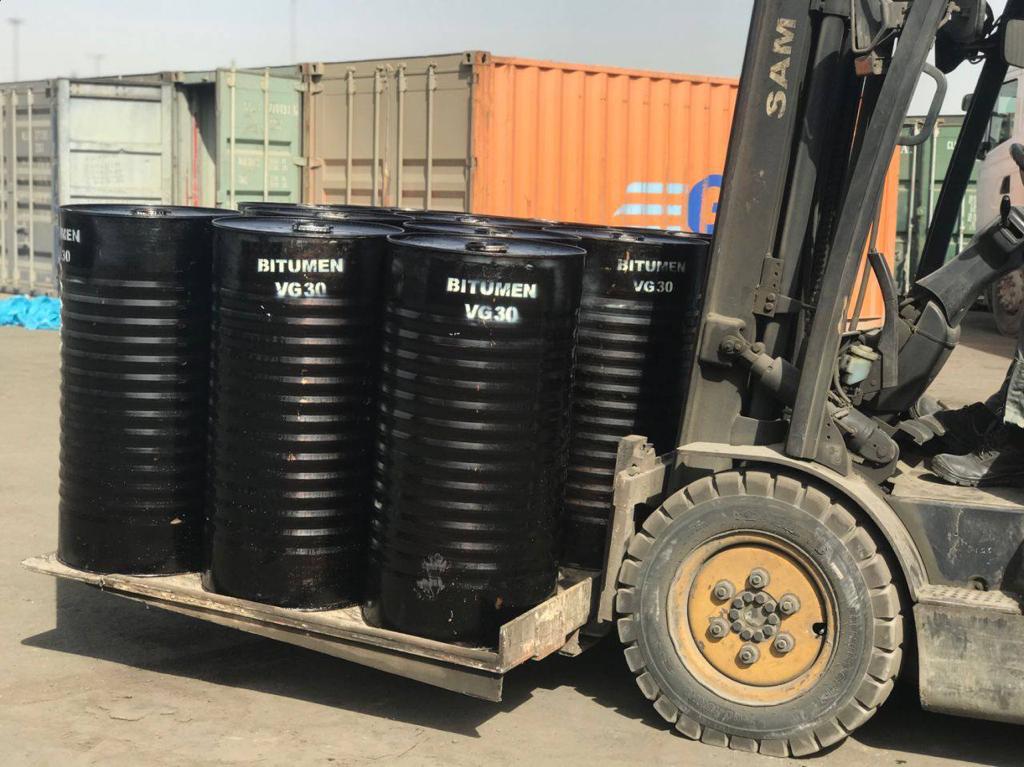
Viscosity Grade Bitumen

General description of viscosity grade bitumen (Asphalt)
Bitumen, a viscous and sticky black material derived from crude oil, plays a crucial role in modern infrastructure and construction. One of the significant variations of bitumen is VG (Viscosity Grade) bitumen. VG bitumen, often referred to as viscosity graded bitumen, is tailored to meet specific requirements for various applications in road construction, roofing, and industrial processes. In this article, we will delve into the grades, properties, and applications of VG bitumen.
Traditionally, paving bitumen has been specified in terms of its penetration, but the measurement of viscosity provides a more accurate method of specifying binder consistency and a more effective method of determining the temperature susceptibility of the bitumen. American Association of State Highway Officials (AASHTO) has two series of viscosity grade bitumen. One is denoted AC (asphalt cement), followed by a number indicating the viscosity in hundreds of poises at 60 C. The second series is denoted AR (aged residue) followed by a number indicating the viscosity in poises (not hundreds of poises) at 60 C after the bitumen has been aged.
In the early 1960s, an improved asphalt grading system was developed that incorporated a rational scientific viscosity test. This scientific test replaced the empirical penetration test as the key asphalt binder characterization. The viscosity grading system gave excellent performance results in the US for over twenty years. The viscosity grading system is more rational than the penetration grading system. Viscosity is defined as the inverse of fluidity. Viscosity thus defines the fluid property of the bituminous material. Viscosity is the general term for consistency and it is a measure of resistance to flow. Many researchers believe that grading of bitumen should be by an absolute viscosity in instead of the conventional penetration units. Viscosity grading is based on a fundamental, scientific viscosity test, which is conducted at 60˚C (near the maximum pavement temperature during summer) and its measurement unit is poise. The test equipment for measuring viscosity both at 60˚C and 135˚C.
Viscosity grading can be done on original (as-supplied) asphalt binder samples (called AC grading) or aged residue samples (called AR grading). The AC grading is based on absolute viscosity at 60 °C in units of 100 poises. Six asphalt cement viscosity grades were established as AC-2.5 (softest), AC-5, AC-10, AC-20, AC-30, AC-40 (hardest). AC-2.5 means asphalt cement with a target viscosity of 250 poises at 60˚C (250 has been abbreviated to 2.5). Similarly, AC-5, AC-10, AC-20, AC-30, and AC-40 mean asphalt cement with target viscosity of 500, 1000, 2000, 3000, and 4000 poises, respectively. Low viscosity grades AC-2.5 and AC-5 are used in cold climate while high viscosity grades AC-10 to AC-40 are generally suitable for the hot climate.
With AC grading, the asphalt binder is characterized by the properties it possesses before it undergoes the HMA manufacturing process. The AR grading system is an attempt to simulate asphalt binder properties after it undergoes a typical HMA manufacturing process and thus, it should be more representative of how asphalt binder behaves in HMA pavements. Table 1 lists key advantages and disadvantages of the viscosity grading system.
Viscosity grade bitumen have a thermoplastic property which causes the material to soften at high temperatures and to harden at lower temperatures. This unique temperature/ viscosity relationship is important when determining the performance parameters such as the adhesion, rheology, durability and application temperatures of bitumen. In the Viscosity Graded Bitumen specifications, further special emphasizes is placed on the Bitumen ductility.
| Standard | Grading based on Orginal Asphalt (AC) | Grading based on Orginal asphalt (AR) | |||||||||
| AASHTO M226 | AC-2.5 | AC-5 | AC-10 | AC-20 | AC-30 | AC-40 | AR-10 | AR-20 | AR-40 | AR-80 | AR-160 |
| ASTM D3381 | AC-2.5 | AC-5 | AC-10 | AC-20 | AC-30 | AC-40 | AR-1000 | AR-2000 | AR-4000 | AR-8000 | AR-16000 |
To compare the specification of each grading system, it is necessary to find the equivalent grade of another system. The following table shows the equivalent penetration grades of viscosity grades with their general application.
| Standard | Grades Minimum 0f Absolute | Viscosity, Poises@60°C | Equivalent Penetration grade |
| IS73: 2013 | VG-10 | 800 | 85-100 |
| VG-20 | 1600 | ——– | |
| VG-30 | 2400 | 60-70 | |
| VG-40 | 3200 | 30-40 , 40-50 |
Advantage of Viscosity Grade Bitumen
1. Unlike penetration grades, same viscosity grade bitumen gave a similar rutting performance in hot weather.
2. Minimum penetration values were retained in the viscosity grading system to maintain acceptable performance (in terms of resistance to fatigue cracking) at the yearly average service temperature of 25˚C.
3. Minimum specified values of kinematic viscosity at 135˚C helped to minimize the potential of tender mixes during construction.
4. Minimum specified penetration at 25˚C and the minimum specified kinematic viscosity at 135˚C established the maximum allowable temperature susceptibility (slope of temperature versus stiffness line).
5. Viscosity grade bitumen were suitable for a wide range of temperatures: 25˚C for raveling/fatigue cracking; 60˚C for rutting; and 135˚C for construction. Temperature susceptibility (the change in asphalt binder rheology with temperature) can be somewhat determined because viscosity is measured at three different temperatures (penetration only is measured at 25°C).
6. Since the viscosity values are measured at two temperatures, bitumen suppliers could provide to the users rational and accurate asphalt mixing and compaction temperatures (corresponding to bitumen viscosity of 170 and 280 centistokes, respectively).
Application of Viscosity Grade Bitumen (Asphalt)
Viscosity Grade Bitumen (Asphalt) is a standard grade Bitumen usually used as a Paving Grade Bitumen suitable for road construction and for the production of asphalt pavements with superior properties. This grade of Bitumen is mainly used in the manufacture of hot mix asphalt for bases and wearing courses and possesses characteristics and qualities unique sand quite different from other agents. They achieve very flexible and tenacious connections with other materials due mainly to viscoelastic response of bitumen, which behavior depends on how fast charges are applied. Viscosity Grade Bitumen supplied by RABIT (RAHA BITUMEN) is petroleum grade bitumen, manufactured from fractional / vacuum distillation of crude oil, which practical appliance and behavior vary according to its temperature. The Bitumen supplied by RABIT (RAHA BITUMEN) is produced from the vacuum residue (short residue) feedstock. Viscosity Grade bitumens are specified by the methods described in ASTM Standard D3381–09 and AASHTO M226-80 (2008). Viscosity Graded specifications cover bitumen (asphalt) graded by Viscosity at 60 C (140 °F).
According to viscosity (degree of fluidity) grading, higher the grade, stiffer the Bitumen. Tests are conducted at 60 C and 135 C, which represent the temperature of road surface during summer (hot climate, similar to northern parts of India) and mixing temperature respectively. The penetration at 25 C, which is annual average pavement temperature, is also retained.
VG-10 BITUMEN: VG-10 is widely used in spraying applications such as surface dressing and paving in very cold climate in lieu of old 80/100 Penetration grade. It is also used to manufacture Bitumen Emulsion and Modified Bitumen products.
VG-20 BITUMEN: VG-20 is used for paving in cold climate & high altitude regions.
VG-30: BITUMEN: It is a kind of bitumen, which is produced during the process of oxidation of vacuum bottom in distillation tower and is categorized based on its viscosity grade. The main common usage of bitumen VG-30 is primarily used to construct extra heavy duty Bitumen pavements that need to endure substantial traffic loads. Also, VG30 is in road construction, waterproofing, building construction industries and also in cutback bitumen production. It can be used in lieu of 60/70 Penetration grade. It is the most suitable for use in hot and rainy weather condition and suitable to be used in mild regions.
VG-40: BITUMEN: VG-40 is used in highly stressed areas such as intersections, near toll booths and truck parking lots in lieu of old 30/40 Penetration grade. Due to its higher viscosity, stiffer Bitumen mixes can be produced to improve resistance to shoving and other problems associated with higher temperature and heavy traffic loads.

Viscosity Grade Bitumen Specification
(ASTM D3381-09)
(ASTM D3381 [8])
(IS 73:2013)



